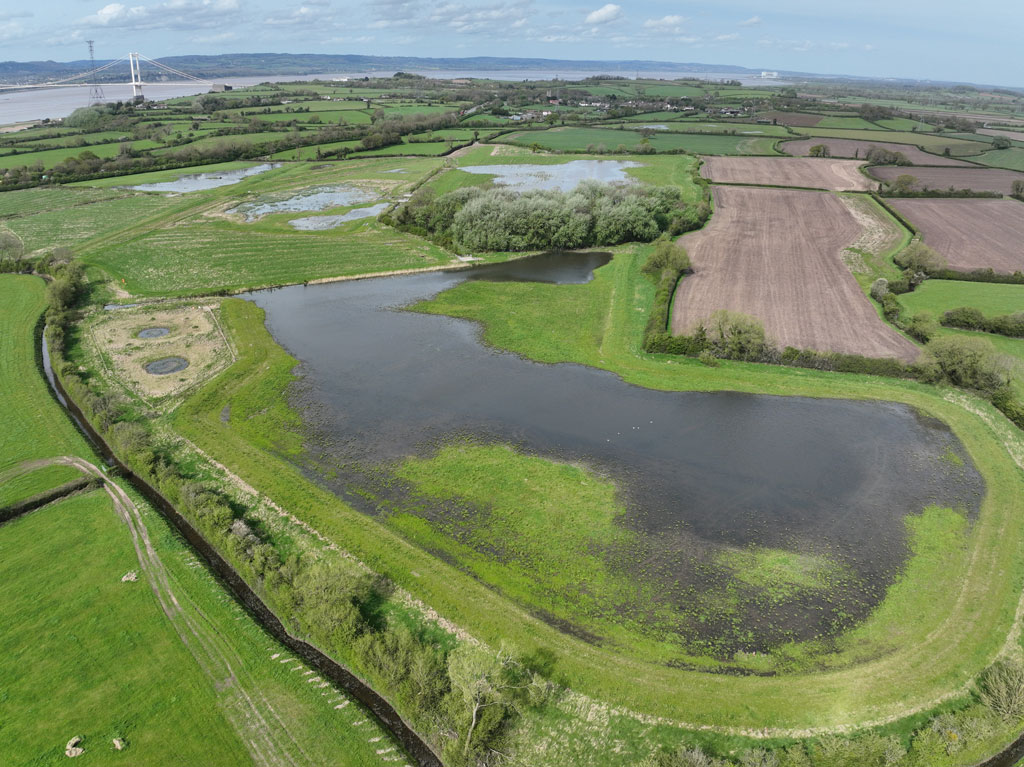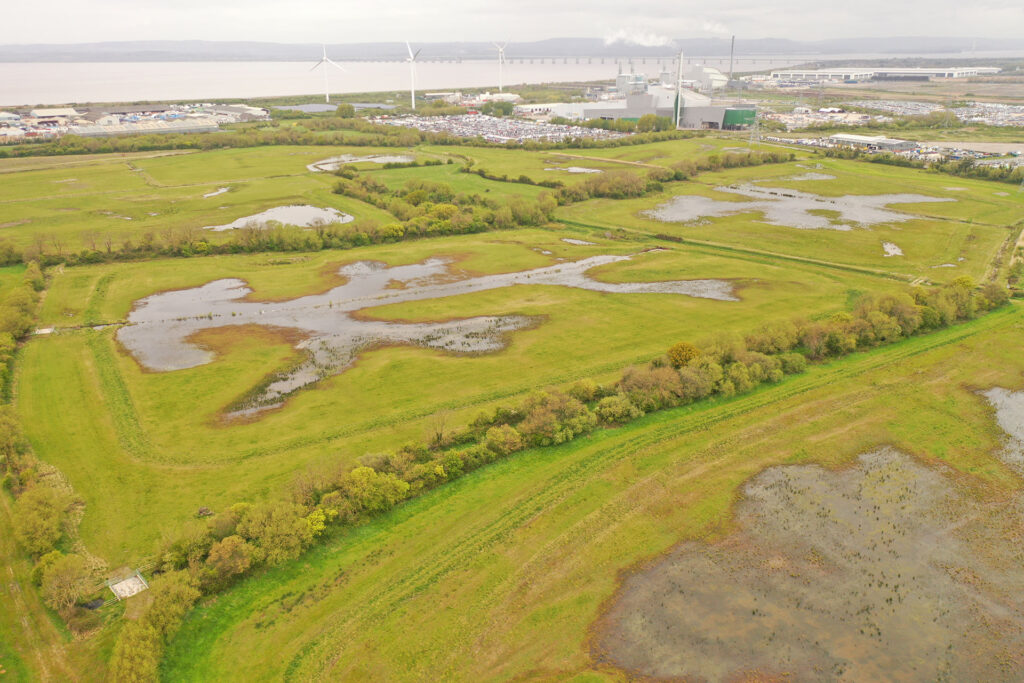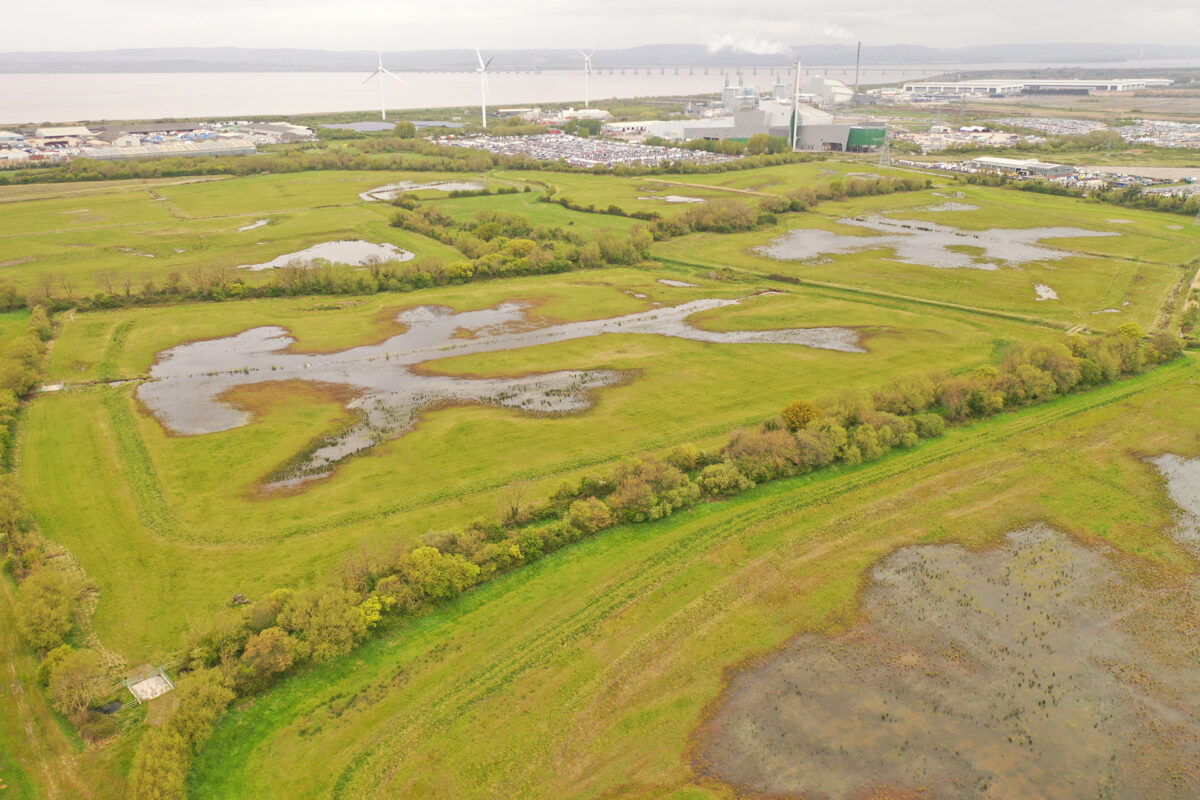Handover of new Severn Estuary wetland habitats marks major milestone in flood defence project
A flood defence project at the Severn Estuary has reached a significant milestone with the official handover of the newly created wetlands at Hallen Marsh in Bristol and Aust in South Gloucestershire.
The construction team on the Avonmouth and Severnside Enterprise Area (ASEA) Ecology Mitigation and Flood Defence Project has officially given back the two sites to their owners, Bristol City Council and South Gloucestershire Council, although some landscaping work will continue in 2025.
The wetlands initiative is part of a broader effort to balance economic development with making space for nature along the Severn Estuary, an area internationally designated for significant populations of wildfowl and wading birds.
The Severn Estuary’s expansive mudflats, salt marshes, and coastal floodplains are vital feeding, migration and wintering grounds for numerous species of waterbirds. Over recent decades, development within the ASEA and its surrounding coastal floodplain has reduced the habitat available for these wetland birds, particularly at high tide when they roost and feed on areas of greenfield land adjacent to the Estuary. To address this, the ASEA project has delivered a mitigation strategy to enhance agricultural land for wetland birds and compensate for new development in Avonmouth and Severnside.


As part of this strategy, the project team has created over 80 hectares of new wetland habitat, the equivalent of 112 football pitches. These areas are designed to support a range of wildlife, in addition to providing crucial ‘high-tide roosts’ for birds using the Severn Estuary.
The newly developed Hallen Marsh and Aust wetlands are tailored to attract a variety of waders and ducks, including shelducks, gadwalls, dunlins, redshanks, wigeons, teals, pintails, and curlews. The wetlands also provide a home for water voles, newts, barn owls, kestrel and other species. In addition to the wetlands, hundreds of native trees and shrubs have been planted to enhance the environment further, promising long-term ecological benefits.
The creation of the Hallen Marsh and Aust wetlands is a testament to our commitment to the biodiversity of the Severn Estuary while supporting sustainable development within ASEA. This new habitat not only provides crucial support for bird populations but also enriches the local environment for future generations."
Ursula Stevenson, project lead for Bristol City Council and South Gloucestershire Council
I would like to thank the ASEA project team for all their hard work in creating the Hallen Marsh wetland. Their work on the wetland has been fundamental in delivering nature recovery in the area and has ensured that our vitally important wetland bird populations have an environment in which to flourish and grow.
"We will ensure that the great work by the ASEA project team is continued, and the wetland is maintained to further support nature recovery and all of the current and future wildlife that lives at Hallen Marsh.”Councillor Andrew Brown, Chair of the Economy and Skills Committee at Bristol City Council
I’m delighted to see this work completed and the newly created wetlands handed over to the local authorities. The new wetlands balance the human impact on the area and provide a thriving environment for nature and the many species of waterbirds attracted to it. As guardians of the Aust wetland, the council will ensure the area remains protected as a vitally important habitat.”
Councillor Louise Harris, cabinet member responsible for the climate and nature emergency at South Gloucestershire Council
While the wetlands are not open to the public, to protect wildlife and prevent wetland and ground-nesting birds from being disturbed, they can be viewed from public rights of way crossing the sites. The project team encourage people to stick to these footpaths and always keep dogs on leads.


